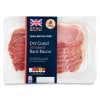. THE IMPORTANCE OF CROP STEERING
When talking about feeding, every strain has its own needs so crop steering is highly important, especially for big commercial growers. Using crop steering allows growers to allow the plants to grow to their full potential and bring out the most of each plant. Independent research conducted in commercial facilities has found that crop steering can increase total terpene,
THC, and overall cannabinoid content when achieving specific water content levels and dry back amounts, despite being hard, automating this process can help you bring out the full potential of the strains you’re working with. So by going back and forth between generative and vegetative growth you can ultimately grow plants that aren’t too leafy while producing excellent quality flower and maximizing quantity.
Now, all strains have an optimal balance between leaf and bud growth so for a 12-week grow cycle, it’s vital to be able to regulate the first 3 weeks of plant growth in order to set the plant for the remaining 9 weeks. This happens because the first three weeks of plant growth are essential, if you fail to steer your crop during the initial weeks of plant growth, it might be too late. Remember there’s definitely a limit and
you should not push your plants too hard, in case you feel like you’re pushing them too much, you can avoid stress by decreasing the EC or watering with less frequency until you find the sweet spot.

Related story
How Often Should I Water My Cannabis Plants?
There’s the need to experiment in order to find the right balance for each specific cannabis plant genetics, this means that in order to find the right balance you will have to experiment for a couple of grow cycles until you can provide your plant with what it needs to produce the best quality and yields that it can possibly produce. Just keep in mind that you’ll always be
limited to the plant's genetic potential, sometimes you will be able to get better yields and sometimes better quality, but at the end of the day, you need to start with good genetics in order for this to work as some strains may produce excellent flower but not the yield you want or produce high yields but not very good in terms of cannabinoid and terpene content





